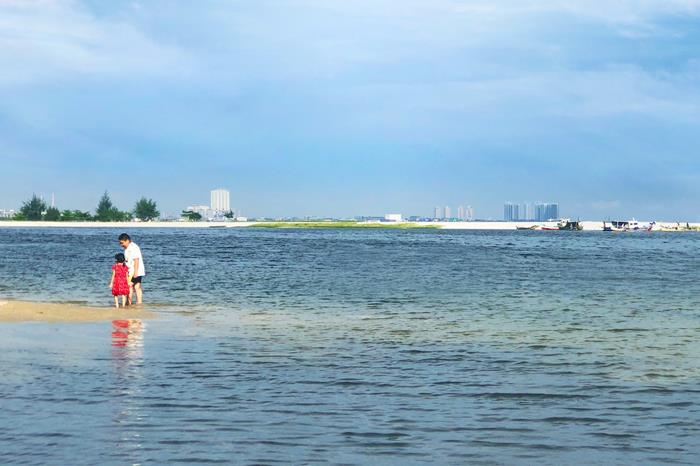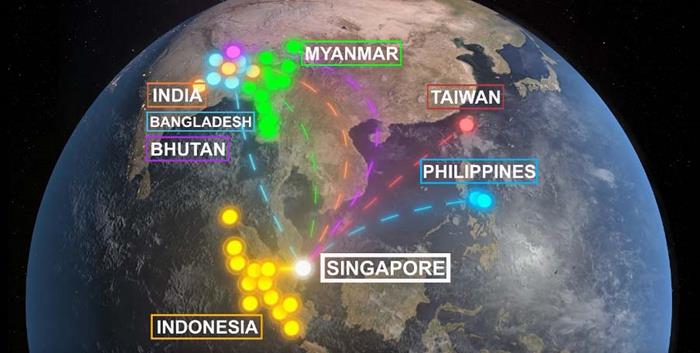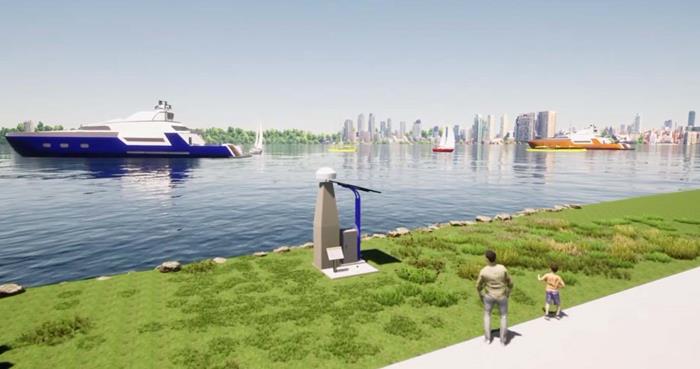In this blog series, scientists from the Earth Observatory of Singapore (EOS) explore key themes of the documentary series Changing Ocean Asia. In this post, Associate Professor Emma Hill, discusses the drivers behind sinking cities in Southeast Asia, a theme in the episode ‘Sinking Cities’ of the documentary series. Watch the episode here.
In 2019, Indonesia announced that their capital would be moved from Jakarta to East Kalimantan. The reason for this? The city is sinking – literally.

One of the coasts of Jakarta (Source: Kelvin Han/Unsplash)
Jakarta is facing the twin challenges of sinking land and a rising sea surface — and it is not alone. Across Southeast Asia, many coastal cities are finding themselves in a similar situation due to a dynamic process known as relative sea-level rise.
Rising seas and sinking land
Relative sea-level refers to the difference between land height and sea surface. If the sea surface rises or the land sinks, relative sea level rises. It is an important area of research for the Geodesy Group at the Earth Observatory of Singapore (EOS).
In cities like Jakarta, land subsidence accounts for the bulk of relative sea-level rise. Land subsidence occurs when water is pumped out from underground to meet the needs of the city’s residents. When water is pulled out from an aquifer, the sediments in the soil compress and the ground surface sinks. Together with Jakarta, Ho Chi Minh City and Yangon have the fastest subsiding land, making them similarly susceptible to coastal inundation. While none are as fast as what we are seeing in Southeast Asia, other cities across the world, from Istanbul to Houston, are also experiencing land subsidence.
Climate change compounds the problem through rising sea surface. As average global temperatures increase, water expands and glaciers melt, leading to an increase in the volume of water in the oceans. But the sea surface is currently rising at a much lower rate compared to the subsidence of the fastest-sinking cities.

Animation of the combined effects of land subsidence and sea-level rise (Source: Nguyen Thi Nam Phuong/Earth Observatory of Singapore)
Aside from land subsidence and sea-level rise, natural processes like earthquakes and tectonic movement can also cause changes in land height. Faults divide tectonic plates, which are moving constantly relative to each other. Along these faults, the plates get stuck and stress builds up. When that stress is suddenly overcome, the faults slip and earthquakes occur, potentially causing land-height changes across the region. As Southeast Asia is a region buzzing with tectonic activity, the entire region is prone to these sudden shifts. For example, the sequence of Sumatran earthquakes that started in 2004 has led to significant land height changes in Thailand and Malaysia. Even Singapore — a country known to be relatively unaffected by natural hazards — has lost a few centimetres of land height, and could lose more, depending on the source location of future earthquakes.

Associate Professor Emma Hill, left, explains how tectonic movements near Sumatra can cause land height changes in the region. For a detailed explanation of the process, view the Changing Ocean Asia episode (Source: Screengrab from Changing Ocean Asia)
With the different processes that can affect land and sea surface heights, we are looking at a dynamic picture in Southeast Asia with a lot of moving parts. For that reason, we need to view the different pieces of the Earth system — the ground, the oceans, the ice sheets and the atmosphere — in a holistic way. We have to understand the connective hazards which threaten the future of cities and communities in Southeast Asia.
Building Resilience through Research and Outreach
At EOS, we are using the latest technology to measure whether cities in the region are sinking and, if so, by how much. We need to use as many data points as possible to build a predictive model so that communities and nature in the region can thrive in the face of these massive challenges. To process the huge volumes of satellite data needed to extensively survey the situation, we collaborated with NASA’s Jet Propulsion Laboratory to clone a system they developed that enables a massive amount of satellite data to be processed in a cloud computing environment. The system is now being enhanced and operated by the EOS Remote Sensing Lab.
Additional data are gathered from the Global Positioning System (GPS) stations that the EOS’ Centre for Geohazard Observations (CGO) has installed in key areas around the region in collaboration with our regional partners. These stations are attached to the ground so when disruptions — for example, an earthquake—occur, we can continually measure any changes in their position. This would elucidate changes in land height and sea surface.

A map showing the location of some CGO’s observation stations (Source: Screengrab from Changing Ocean Asia)
In fact, we are installing some of these on the coastlines of Singapore soon. Beyond using these stations for data collection, we are making them visually appealing and enhancing their design with educational elements, so that the public can learn about what the installation does. After all, the ultimate goal is a more resilient community and that entails having everybody on board and familiar with the topic.

Digital representation of a Global Navigation Satellite System (GNSS) receiver in Singapore. (Source: Screengrab from Changing Ocean Asia)
With collaboration across the different arms of society, we can work to ensure our communities will remain safe in the face of sinking cities and our changing ocean.
The new documentary series Changing Ocean Asia explores four key themes around the impacts of the changing ocean. Narrated by Dr Sylvia Earle, the documentary also looks at the challenges and solutions that are being explored by scientists at the Earth Observatory of Singapore as well as governments and businesses.
The series can be viewed from any web browser or wifi-enabled device that offers the Curiosity Stream application or on any one of their partner platforms including StarHub TV Channel 422 in Singapore, Amazon Prime, Apple TV, and other partners globally.
This research was supported by the National Research Foundation, Singapore under its NRF Investigatorship scheme, and National Environment Agency under the National Sea Level Programme; and by the Singapore Ministry of Education Academic Research Fund SEA2 Tier 3.